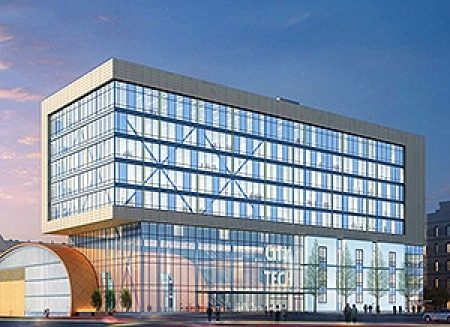Construction of New Buildings & Facilities Essential Component of Universities' Plans To Attract Top Students, Teachers & Researchers
If you have visited the campus of virtually any U.S. university in the past few years, you were likely to encounter an active construction site on campus with at least one major project under development. In addition to the inevitable need to replace aging buildings and infrastructure, building cutting-edge facilities has become essential for any university seeking to stay competitive. Thus, the multi-year "Master Plans" for many leading universities in the U.S. reference:
- Plans for building sleek, high-tech buildings which are a critical component in their strategy to attract top students, educators, researchers, and donors.
- Beyond the construction of iconic new buildings which impress prospective students and promise a high-quality environment for living and studying (such as modern dormitories, dining halls, academic buildings, libraries, campus commons, and recreation centers), new facilities under construction on many campuses include: STEM & Multi-Purpose Research & Innovation Centers, Technogy & Business Incubators, multi-use outdoor spaces, campus infrastructure/utilities, and other facilities which welcome in the surrounding community (such as theaters, museums, health centers, sports complexes, university-owned hotels and conference facilities).
Beacon Consulting Group has very unique experience in helping to monitor, evaluate, and turn around on-campus construction projects which have encountered delays or major contractor defaults. Our team has been involved in the monitoring and turn-around of educational facility construction projects across the U.S. in recent years, including projects with design/engineering/construction budgets in excess of $100-million. This experience can be invaluable for helping avoid some of the pitfalls associated with managing and monitoring on-campus construction projects.
Challenges. Modern university contruction projects often have some unique challenges, such as:
- Undertaking complex, major construction projects without impacting the quality of life for students and faculty on campuses which are increasingly utilized on a year-round basis;
- Very aggressive summer completion schedules (with hard deadlines before the start of the fall semester);
- Integrating new facilities into a campus' existing infrastructure (power, water, HVAC, communications, security, fire protection, transportation, etc) with minimal disruption;
- Highly complex designs with aggressive completion timelines which can be challenging even for large, highly experienced GCs and CMs;
- At many universities, in-house personnel need outside help in terms of expertise and systems needed for proper oversight of major capital projects (which are often highly complex, include many different entities working together, and involve a logistically and technically challenging construction environment).
A report entitled "2019 Facilities & Construction Brief" published by College Planning & Management Magazine included a survey of 215 U.S. colleges and universities located in 44 different states. As expected, the report indicated that most of the schools were either completing, planning or starting major new construction and renovation projects. Some highlights from that report include:
- 79% percent of the institutions surveyed planned to start new construction projects in 2019
- 57% completed major renovations or modernization projects in 2018
- 31% completed the construction of new buildings in 2018
- 60% were planning to complete major renovations or modernization projects in 2019
- 25% were planning to complete the construction of new buildings in 2018
- 55% were planning to start major renovations or modernization projects in 2019
- 33% were planning to start the construction of new buildings in 2018
Among the various challenges (related to planned and ongoing construction) cited in the report included:
- Even when funding is available for new construction, it can be difficult to keep pace with needed projects
- Increasing construction costs
- Accountability issues with contractors
- Availability of manpower from various trades to complete their work
